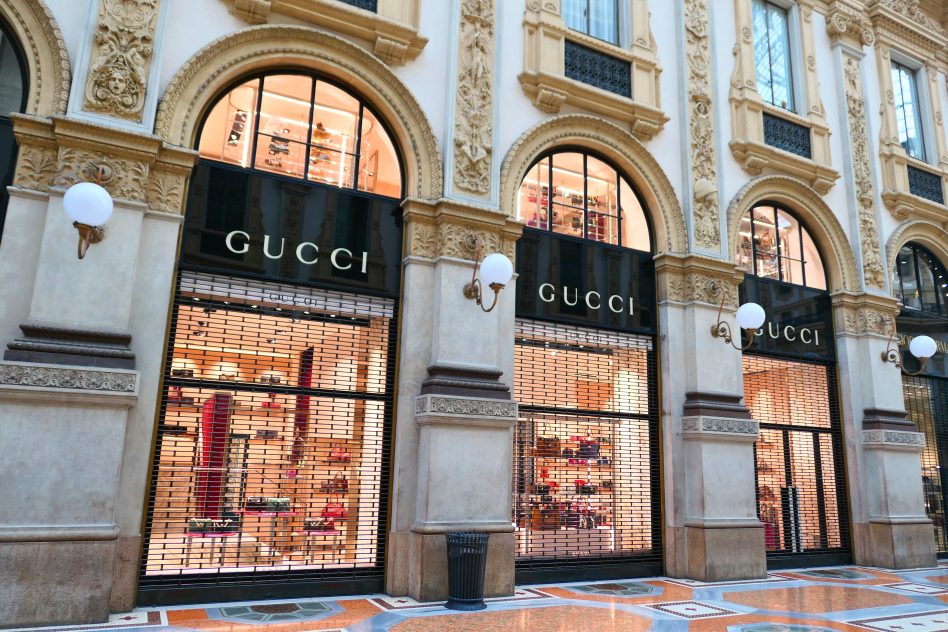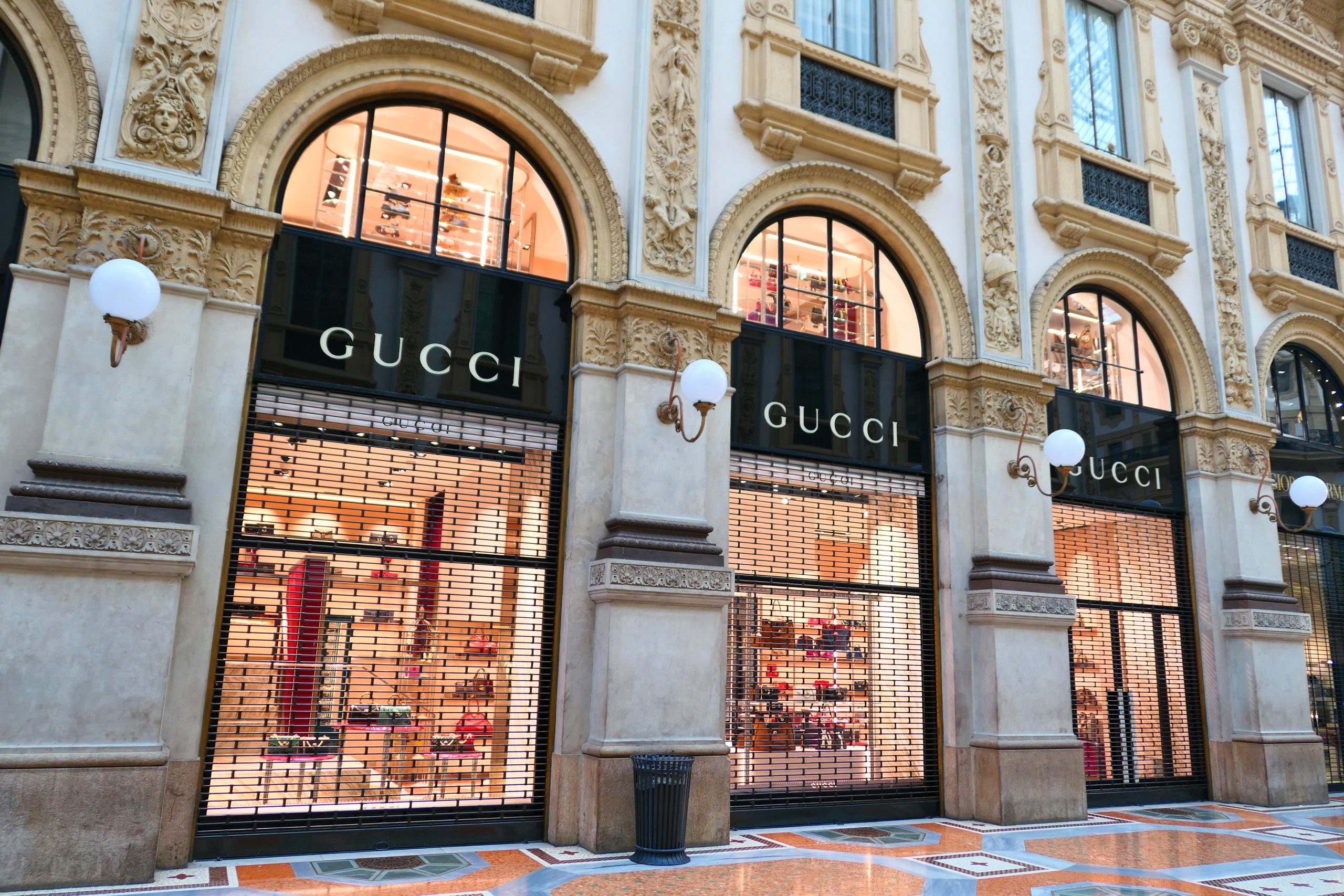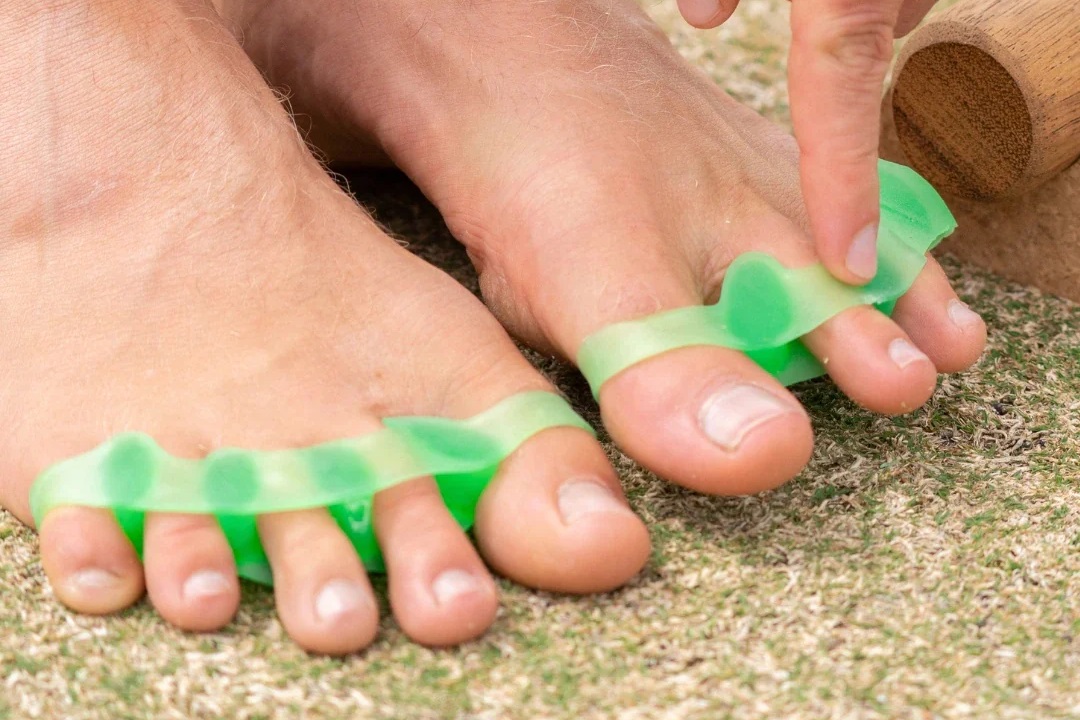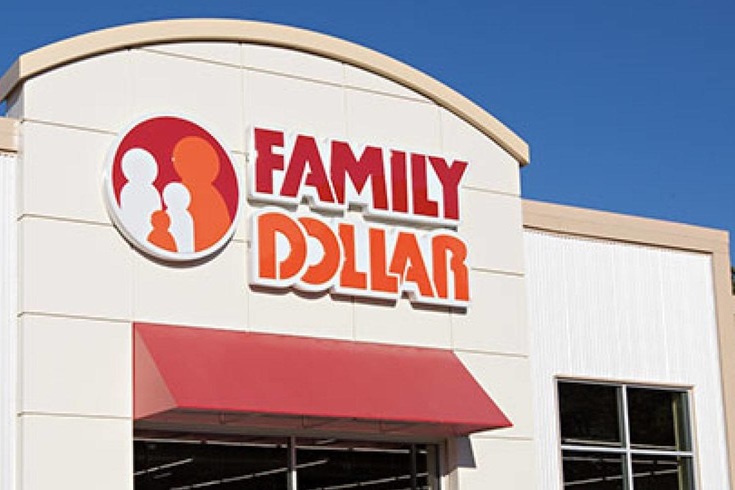
Image source: Studio Barcelona / Shutterstock
Gucci products have always been up and down when it comes to sales. Now, with the current state of the economic climate and continuing customer fatigue, the Italian fashion brand is launching new plans in order to keep business rolling.
Next month, ads for Gucci brand will appear in increased numbers in a new ad campaign. Also in September, Gucci’s newest designer, Sabato De Sarno, is set to showcase his first collection for the label at this year’s Milan Fashion Week.
In the weeks following the show, Gucci’s latest advertising drive will flood high-street billboards, magazine covers, and social media platforms, in an attempt to reinvigorate diminishing sales figures and reignite customer interest.
This lull in the market is nothing new for Gucci. 30 years ago, the company almost went bankrupt until American designer Tom Ford became creative director and quickly turned things around.
This growth didn’t last forever though, and by 2014 Gucci had again started to lose steam to the point where major department stores in the U.S. no longer wished to work with or promote the brand’s products.
Thankfully for Gucci, by 2015 it was able to turn things around again and began one of the biggest makeovers the luxury goods industry has ever seen. Gucci hired an unknown designer at the time by the name of Alessandro Michele, whose eye-catching and elaborate designs became an instant hit with fashion lovers.
Both Gucci and Michele didn’t look to focus groups or customer demands for inspiration, but instead just did exactly what they wanted to do. This risky gamble paid off and worked wonders for Gucci sales forecasts.
Initially, Gucci’s target was to reach €6 billion in sales revenue, almost double what it totaled before the rebranding. This figure was surpassed in less than 2 years, resulting in a new target of €10 billion, which was almost reached by 2019.
Despite this period of success, Gucci has now exhausted much of its brand power. So far in 2023, sales for the company have only increased by 1% and failed to capitalize on much of the record sales enjoyed by other luxury brands during the pandemic.
For example, in 2022, sales at rival companies such as LVMH including Louis Vuitton and Christian Dior, and several other companies were almost 75% more higher than that of 2019. Compare this to Gucci’s 2022 sales, which were only 9% higher on average.
Gucci’s parent company Kering’s decision to cut ad budgets early in the pandemic period as a means to protect profit margins ultimately proved to be a mistake. Gucci’s over-the-top designs also excluded many older and more sensible shoppers, which left Gucci at a loss when the interest of millennial shoppers also started to slip.
As luck would have it though, both Gucci and Kering have a proven track record for energizing brands. It revitalized the brand Balenciaga into a major player on the scene and rejuvenated Bottega Veneta into another success story.
Despite this, Kering doesn’t have a good record for maintaining a steady stream of reliable growth, which is what shareholders really care about. The general perception is that its labels are too trend reliant and therefore vulnerable to change. This is the primary reason why Kering’s stock trades at vast discounts compared to that of its rivals.
Also, recent studies and fashion polls show that due to the current economic crisis, customers are now favoring a more conservative outlook, which is potentially another bad sign for Kering.
Even though Gucci’s turnaround back in 2015 was also during a slow market period for luxury brands, Kering can’t afford to take the same risks it did back then. Gucci is currently worth around €10.5 billion and generated over 50% of Kering’s overall sales and almost 70% of overall profit last year.
With the recent shake-ups in management now firmly in place, Gucci is ready to make sure the new look launch goes off without a hitch next month. With that said, expectations for a quick turnaround remain low.
Gucci will need to produce a period of steady growth amid the increasing ad budget costs endured across the entire luxury brand industry and customer attention becoming ever harder to maintain. Both Gucci and Kering have a lot riding on next month’s launch, and it will be interesting to see the impact and effect it will have on convincing customers to buy its products.

Image source: Studio Barcelona / Shutterstock
Gucci products have always been up and down when it comes to sales. Now, with the current state of the economic climate and continuing customer fatigue, the Italian fashion brand is launching new plans in order to keep business rolling.
Next month, ads for Gucci brand will appear in increased numbers in a new ad campaign. Also in September, Gucci’s newest designer, Sabato De Sarno, is set to showcase his first collection for the label at this year’s Milan Fashion Week.
In the weeks following the show, Gucci’s latest advertising drive will flood high-street billboards, magazine covers, and social media platforms, in an attempt to reinvigorate diminishing sales figures and reignite customer interest.
This lull in the market is nothing new for Gucci. 30 years ago, the company almost went bankrupt until American designer Tom Ford became creative director and quickly turned things around.
This growth didn’t last forever though, and by 2014 Gucci had again started to lose steam to the point where major department stores in the U.S. no longer wished to work with or promote the brand’s products.
Thankfully for Gucci, by 2015 it was able to turn things around again and began one of the biggest makeovers the luxury goods industry has ever seen. Gucci hired an unknown designer at the time by the name of Alessandro Michele, whose eye-catching and elaborate designs became an instant hit with fashion lovers.
Both Gucci and Michele didn’t look to focus groups or customer demands for inspiration, but instead just did exactly what they wanted to do. This risky gamble paid off and worked wonders for Gucci sales forecasts.
Initially, Gucci’s target was to reach €6 billion in sales revenue, almost double what it totaled before the rebranding. This figure was surpassed in less than 2 years, resulting in a new target of €10 billion, which was almost reached by 2019.
Despite this period of success, Gucci has now exhausted much of its brand power. So far in 2023, sales for the company have only increased by 1% and failed to capitalize on much of the record sales enjoyed by other luxury brands during the pandemic.
For example, in 2022, sales at rival companies such as LVMH including Louis Vuitton and Christian Dior, and several other companies were almost 75% more higher than that of 2019. Compare this to Gucci’s 2022 sales, which were only 9% higher on average.
Gucci’s parent company Kering’s decision to cut ad budgets early in the pandemic period as a means to protect profit margins ultimately proved to be a mistake. Gucci’s over-the-top designs also excluded many older and more sensible shoppers, which left Gucci at a loss when the interest of millennial shoppers also started to slip.
As luck would have it though, both Gucci and Kering have a proven track record for energizing brands. It revitalized the brand Balenciaga into a major player on the scene and rejuvenated Bottega Veneta into another success story.
Despite this, Kering doesn’t have a good record for maintaining a steady stream of reliable growth, which is what shareholders really care about. The general perception is that its labels are too trend reliant and therefore vulnerable to change. This is the primary reason why Kering’s stock trades at vast discounts compared to that of its rivals.
Also, recent studies and fashion polls show that due to the current economic crisis, customers are now favoring a more conservative outlook, which is potentially another bad sign for Kering.
Even though Gucci’s turnaround back in 2015 was also during a slow market period for luxury brands, Kering can’t afford to take the same risks it did back then. Gucci is currently worth around €10.5 billion and generated over 50% of Kering’s overall sales and almost 70% of overall profit last year.
With the recent shake-ups in management now firmly in place, Gucci is ready to make sure the new look launch goes off without a hitch next month. With that said, expectations for a quick turnaround remain low.
Gucci will need to produce a period of steady growth amid the increasing ad budget costs endured across the entire luxury brand industry and customer attention becoming ever harder to maintain. Both Gucci and Kering have a lot riding on next month’s launch, and it will be interesting to see the impact and effect it will have on convincing customers to buy its products.



